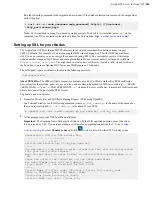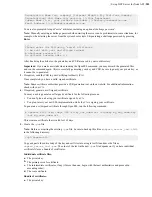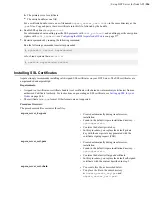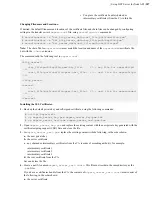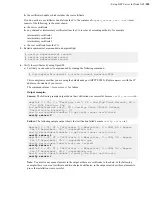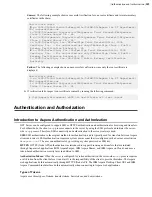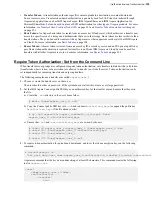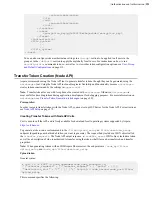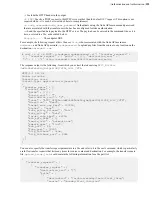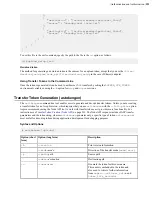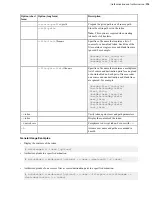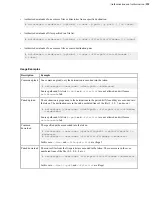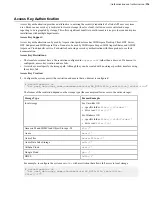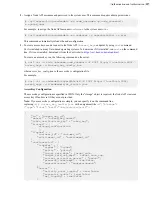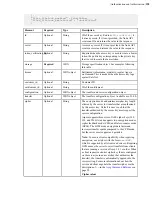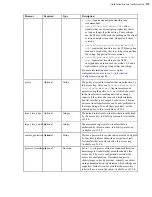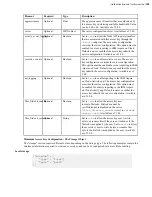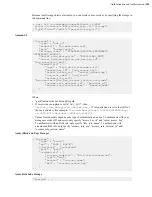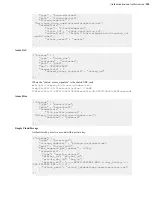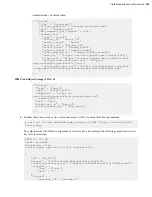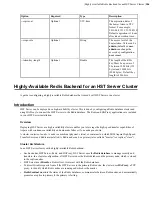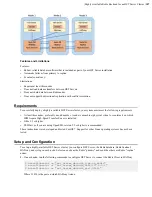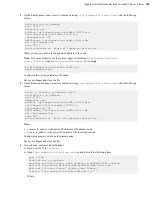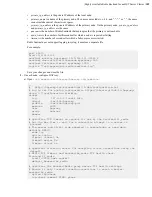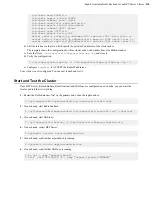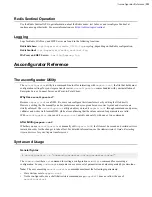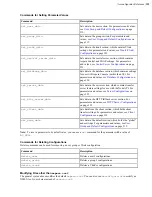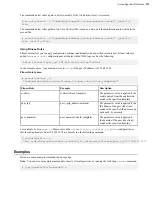
| Authentication and Authorization |
298
},
"files_filelock_enabled" : true|false,
"files_filelock_restriction" : "
restriction
"
}
Element
Required
Type
Description
id
Optional
String
ID of the access key. Returns
209 (conflict)
if
it already exists. If it is not provided, the Node API
creates an ID and returns the value in the response.
secret
Optional
String
Access key secret. If it is not provided, the Node API
creates a secret and returns the value in the response.
token_verification_key
Optional
String
Required when the access key is used to create a bearer
token, the public key corresponding to the private key
that is used to create the bearer token.
storage
Required
JSON
Storage specification object. See examples following
this table.
license
Optional
JSON object
Entitlement information, similar to regular Aspera
on Demand. This is needed when the access key logs
against SafeNet.
customer_id
Optional
String
Customer ID
entitlement_id
Optional
String
ID of the entitlement
configuration
Optional
JSON object
The transfer and server configuration object.
transfer
Optional
JSON object
The transfer configuration object. Available as of 3.8.0.
cipher
Optional
String
The encryption mode and minimum cipher key length
allowed by the server for transfers that are authorized
by this access key. Default is unset, such that the
transfer authorized by the access key must respect the
server configuration.
Aspera supports three sizes of AES cipher keys (128,
192, and 256 bits) and supports two encryption modes,
cipher feedback mode (CFB) and Galois/counter mode
(GCM). The GCM mode encrypts data faster and
increases transfer speeds compared to the CFB mode,
but the server must support and permit it.
Note:
To ensure client compatibility when requiring
encryption, use a cipher with the form
aes-XXX
,
which is supported by all clients and servers. Requiring
GCM causes the server to reject transfers from clients
that are running a version of Ascp 3.8.1 or older. When
a client requests a shorter cipher key than is configured
on the server (or in an access key that authorizes the
transfer), the transfer is automatically upgraded to the
server setting. For more information about how the
server and client negotiate the transfer cipher, see the
description of
-c
page 99.
Cipher values

